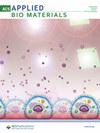The Influence of Pedaling Frequency on Blood Lactate Accumulation in Cycling Sprints.
IF 4.6
Q2 MATERIALS SCIENCE, BIOMATERIALS
引用次数: 0
Abstract
Anaerobic performance diagnostics in athletes relies on accurate measurements of blood lactate concentration and the calculation of blood lactate accumulation resulting from glycolytic processes. In this study, we investigated the impact of pedaling frequency on blood lactate accumulation during 10-second maximal isokinetic cycling sprints. Thirteen trained males completed five 10-second maximal isokinetic cycling sprints on a bicycle ergometer at different pedaling frequencies (90 rpm, 110 rpm, 130 rpm, 150 rpm, 170 rpm) with continuous power and frequency measurement. Capillary blood samples were taken pre-exercise and up to 30 minutes post-exercise to determine the maximum blood lactate concentration.Blood lactate accumulation was calculated as the difference between maximal post-exercise and pre-start blood lactate concentration. Repeated measurement ANOVA with Bonferroni-adjusted post hoc t-tests revealed significant progressive increases in maximal blood lactate concentration and accumulation with higher pedaling frequencies (p<0.001; η2+>+0.782).The findings demonstrate a significant influence of pedaling frequency on lactate accumulation, emphasizing its relevance in anaerobic diagnostics. Optimal assessment of maximal lactate formation rate is suggested to require a pedaling frequency of at least 130 rpm or higher, while determining metabolic thresholds using the maximal lactate formation rate may benefit from a slightly lower pedaling frequency.踩踏频率对自行车短跑中血液乳酸累积的影响
运动员的无氧运动能力诊断依赖于对血液乳酸浓度的精确测量,以及对糖酵解过程导致的血液乳酸累积的计算。在这项研究中,我们调查了在 10 秒钟最大等速骑行冲刺过程中蹬踏频率对血液乳酸累积的影响。13 名训练有素的男性在自行车测力计上以不同的踩踏频率(90 转/分、110 转/分、130 转/分、150 转/分、170 转/分)完成了 5 次 10 秒钟最大等速冲刺,并进行了连续的功率和频率测量。运动前和运动后 30 分钟内采集毛细血管血样,以测定最大血乳酸浓度。血乳酸累积值按运动后最大血乳酸浓度与运动开始前血乳酸浓度之差计算。重复测量方差分析及 Bonferroni-adjusted post hoc t 检验表明,随着蹬踏频率的增加,最大血乳酸浓度和乳酸累积量会显著增加(p+0.782)。研究结果表明,蹬踏频率对乳酸累积有显著影响,强调了蹬踏频率在无氧诊断中的相关性。最佳的最大乳酸形成率评估需要至少 130 rpm 或更高的蹬踏频率,而使用最大乳酸形成率确定代谢阈值可能会受益于稍低的蹬踏频率。
本文章由计算机程序翻译,如有差异,请以英文原文为准。
求助全文
约1分钟内获得全文
求助全文

 求助内容:
求助内容: 应助结果提醒方式:
应助结果提醒方式:


